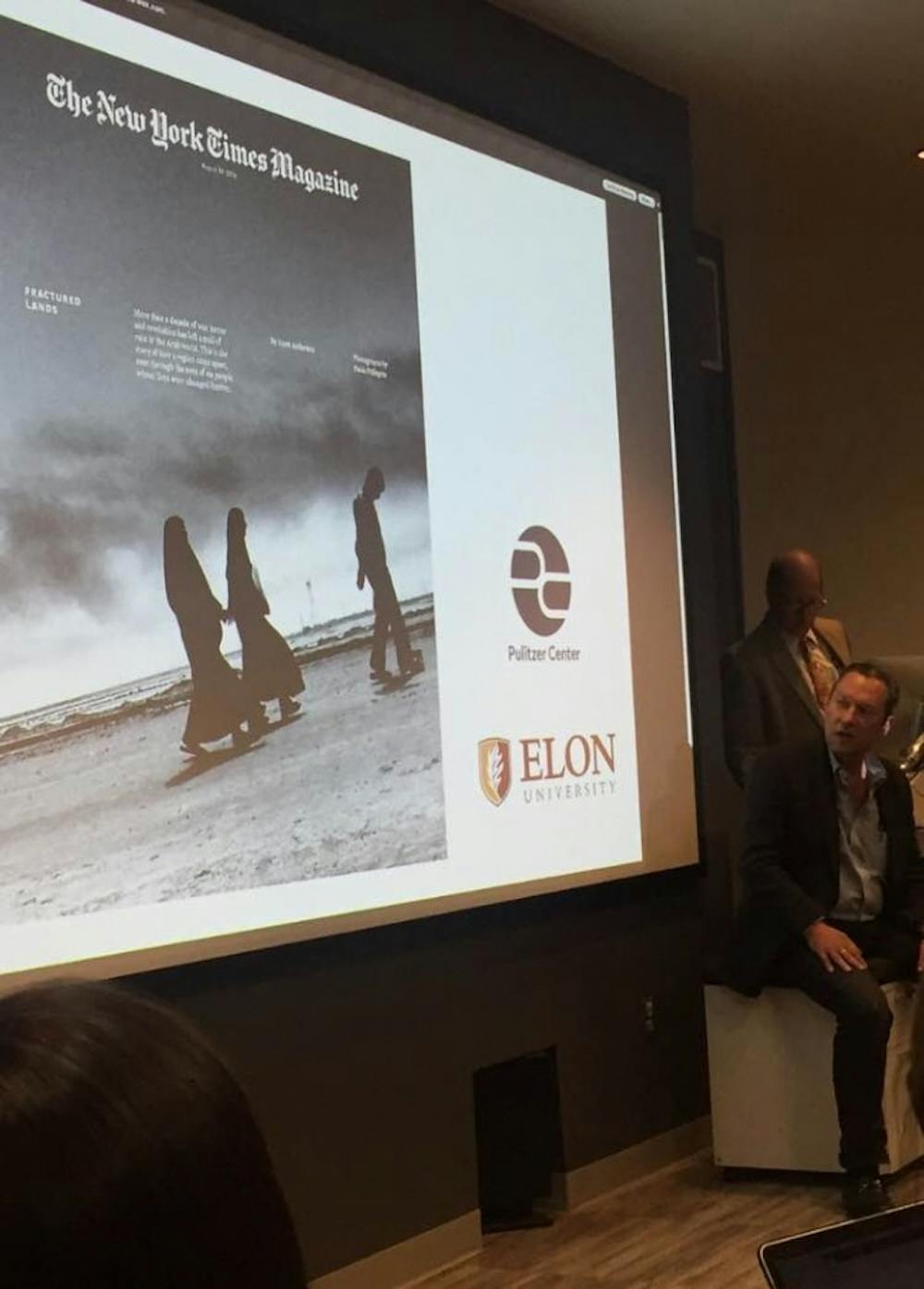New York Times Magazine reporter Scott Anderson embarked on a “treasure hunt” of sorts almost two years ago, scavenging the war-trodden regions of the Middle East for selective anecdotes of people he could chronicle to depict the blunt realities of sorrow felt by so many in that area.
But in actuality, he was the coveted prize in some people’s eyes.
In ISIS-controlled states such as Syria, Westerners — and Western journalists in particular— have enormous bounties on their heads because their native countries will pay large sums as a ransom. Europeans are worth $5 million and Americans are considered a priceless trophy kill. Among other things, this savagery was one of the main circumstances Anderson wrestled with when writing his latest piece, “Fractured Lands: How the Arab World Fell Apart.”

“That’s kind of creepy to think about when you’re stumbling around in a foreign country,” Anderson said. “You’re kind of thinking of yourself as a walking pot of gold.”
The shirt and blazer Anderson wore when he spoke at Elon University Oct. 25 somewhat embodied the sophistication in his writing and the poise in which he recalled his journeys. But they are also the antithesis of the complex, bleak subjects he reported on. Jake Silverstein, editor-in-chief of the New York Times Magazine, approached the 25-year journalism veteran two years ago to report on the Middle East from the inside.
After four trips and 18 months of reporting alongside a photographer, Anderson produced a cohesive piece encompassing the entirety of the Aug. 14 New York Times Magazine. Silverstein said it was “unprecedented” for the magazine to devote an entire issue to one story and they would not do it if they weren’t convinced it was “one of the most clear-eyed, powerful and human explanations of what has gone wrong with this region.”
The Pulitzer Center for Crisis Reporting assisted in funding Anderson's expenses with the New York Times and Elon has a relationship with the Center through Glenn Scott, associate professor of communications. It was through Scott’s planning that Anderson came to Elon to speak with students and faculty about his extensive work.
“He’s being very generous with his time,” Scott said. “The stories he tells in this one piece of the New York Times Magazine are just superb stories. It refreshes my interest in understanding what’s going on in the Middle East.”
“Fractured Lands” intertwines the narratives of six separate individuals from a plethora of different Arab states. Originally, Silverstein and Anderson tried to sculpt the piece through the eyes of dictators and individuals in power. But they were unable to schedule interviews with all of the tyrants. Anderson did coordinate an session Muammar Gaddafi and he said the former Libyan prime minister accurately predicted the rise of ISIS after American forces left Iraq. They began to conquer surrounding areas and left a trail of destruction their wake And for most of the half-dozen people recorded in the piece, the jihadist group portrays the antagonist of their lives’ plots. Anderson shifts from person to person with ease, transitioning from saga to saga in depth and detail. Anderson specializes in long-form reporting and bragged about "never sticking a microphone up someone's nose to get a sound bite." He approached the story this way because he said it offered vast perspectives. The journalist wrote a book, “Lawrence in Arabia,” in 2013, and used a similar style. He hopes the manner in which he wrote the piece illustrates the conflict in the region through numerous lenses.
“The people had to have extraordinary stories because that is what’s going to keep the reader engaged,” Anderson said. “Through their experiences, I was hoping to build a tapestry of what was happening in the region.”
This week's issue is dedicated to a single story: How the Arab World Came Apart. https://t.co/QNCb2G9grg pic.twitter.com/Zh0vjCRFow
— NYT Magazine (@NYTmag) August 11, 2016
The six people used symbolize a multitude of different situations, ranging from an Egyptian mother to a Kurdish doctor. Possibly the most interesting interviewee was Wakaz Hassan, a captured ISIS fighter. Anderson said Hassan defected ISIS, but was recognized by authorities and captured. Hassan was candid with his descriptions of ISIS tactics, including executions he personally committed. Hassan, Anderson said, has probably now been turned over to the Iraqi army to face trial and eventual execution.
Such harshness in the way of life for most people in that region, and Scott said he appreciates Anderson’s work because “it’s important to challenge and shatter the over simplistic ways of thinking towards this region.” Anderson echoed that and hopes people the way he illustrated the Middle East in his piece will paint a more detailed picture of what life is really like in the area.
“I think there is a desire out there get a better handle on this topic and showing the back and forth on different people from different places will show the knock on effect these event have on one another,” Anderson said. “When you see them running concurrently like that, I hope people se that all of this stuff is connected."


